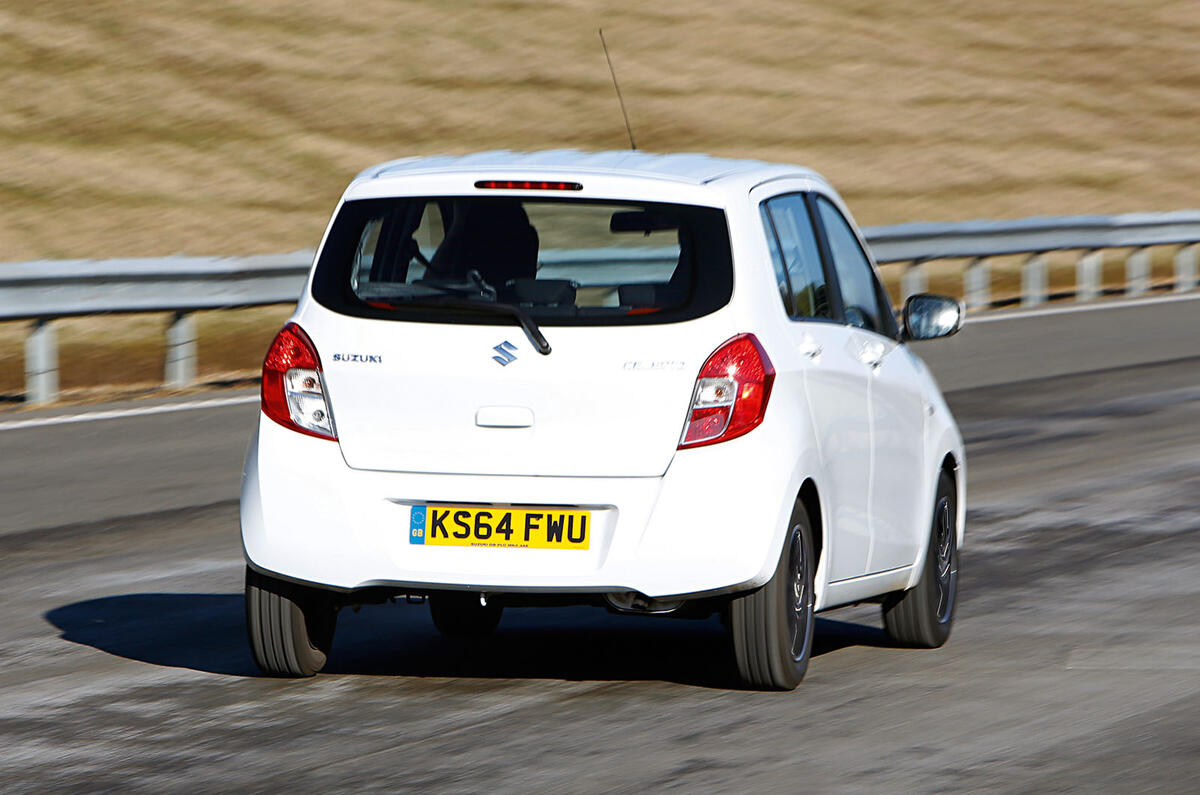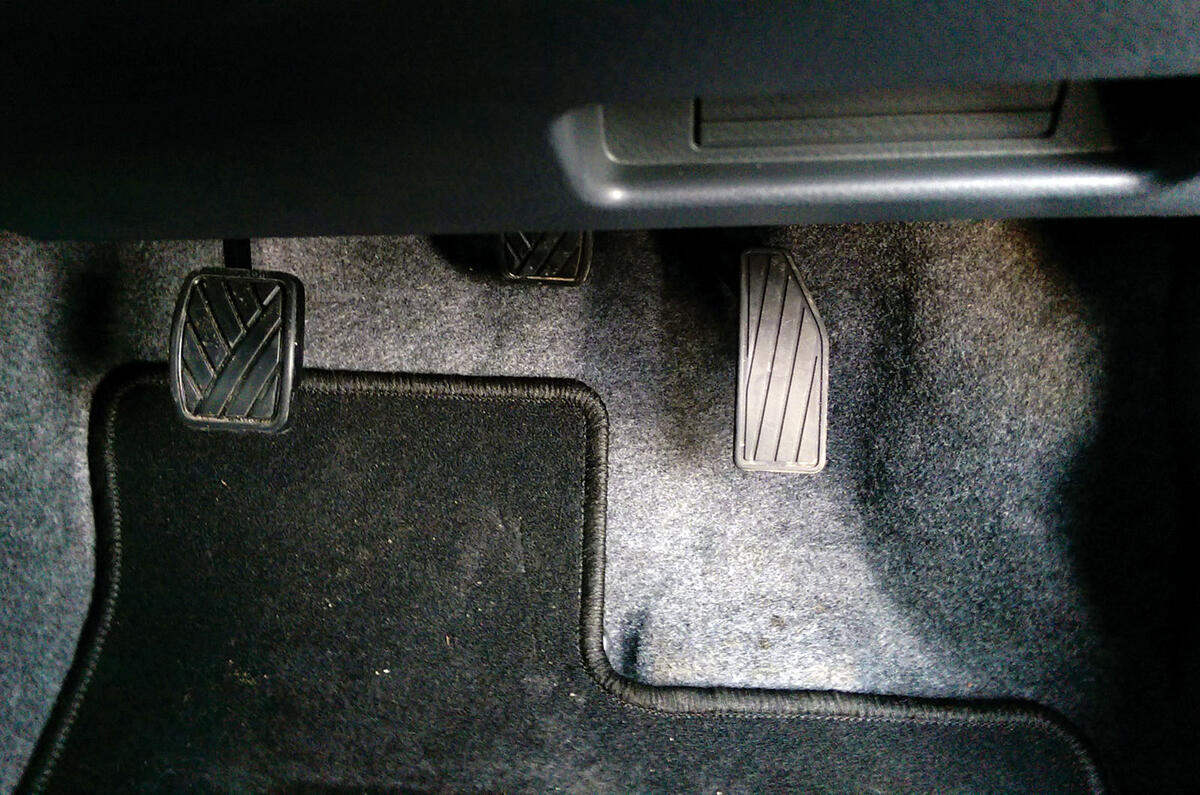On Friday 30 January, during Autocar’s emergency stop test in controlled circumstances at Millbrook Proving Ground, a new Suzuki Celerio suffered complete brake failure.
This was unheard of. Yes, there had been instances of brake fade or a loss of vacuum assistance following repeated hard stops in Autocar’s extensive history of testing. There had even been cases of brake pads catching fire – a result of the intense heat caused by repeated hard stops – but never in our recollection had a car suffered a problem that resulted in a complete absence of stopping power.
Our first action was to inform Suzuki. The car was promptly recovered for inspection and another one was delivered to allow our testing to continue. When the second Celerio suffered exactly the same failure, leaving fellow reviewer Matt Saunders and me sailing unchecked down Millbrook’s mile-long straight, the situation escalated.
When we told Suzuki about this second failure, Japanese engineers who had been in the UK the week before for a press event were recalled to inspect the problem. At that time, the first right-hand-drive Celerios were reaching customers and dealers and Suzuki had arranged a sizeable weekend media campaign around its new model.
Although some customers were still able to book test drives in the Celerio over that weekend, by the Monday Suzuki had recalled the 37 cars that had reached buyers in the UK and cancelled all test drives until its investigation was completed.
On 9 February we were back at Millbrook – at Suzuki’s behest – in order to test the revisions that had been made to the Celerio. Chief engineer Shigeki Suzuki was present to demonstrate and explain the changes. He showed us two brake pedal assemblies: the current production item and a revised production prototype.
In the centre of the original pedal assembly is a small metal piece that is integrated into the brake pedal linkage. It is the brake pedal retraction system, which is designed to prevent the pedal from causing injury to the driver in a frontal impact. This mechanism was only fitted to cars in the UK, Ireland, Australia and New Zealand, where safety regulations necessitated it.
When a significant force – which should be above that used in emergency braking – is applied, this component in the pedal assembly detaches from its mounting. This causes the brake pedal to drop away, preventing an impact with the driver’s legs. Similarly, if the bulkhead begins to deform in a collision, the link can detach, again causing the pedal to retract safely.
It transpires that the design of the original part resulted in an overly sensitive safety system, one that could leave a driver with no brakes at all. The revised pedal assembly, on the other hand, has a much thicker and differently structured brake pedal retraction link.
“I was surprised to hear of this phenomenon,” said Suzuki. “We had not encountered it before. We had submitted the cars to a lot of testing but nothing had happened.
“On the Saturday, I had a call from the office. Then we immediately started investigations. Within 24 hours, we had reproduced the problem Autocar experienced and had started making changes. It was discovered that a few links were bending when they should not.
“A big, sudden force through the pedal could cause the link part to bend and prematurely detach as a result. We then set about designing, making and checking new parts. We then brought them to the UK to test them and make sure they conform.”
Suzuki gestured to the revised Celerio sitting at the start of the mile straight, and I took a seat. Instead of chancing my arm, this time around I carried out a static test on the parked Suzuki. Stamping on the brake pedal repeatedly did nothing except exhaust the available vacuum assistance – the engine wasn’t running – and the pedal steadfastly refused to do anything unexpected.
We headed out onto the track, wound the Celerio up to 60mph and stood on the brakes. The ABS chuntered, the tyres chirped and the car came to a halt. The stop was controlled, effective and exactly as it should have been. I stretched the Celerio to 80mph and repeated the emergency stop. The process was repeated several times, but the brake pedal behaved exactly as it should have. It seemed clear that the issue had been resolved.
From the first failure to our test of Suzuki’s remedy, 10 days had elapsed. Crucially, no customers had been in a position to suffer a failure like that experienced during our controlled tests. The cars that were recalled are now in the process of being fitted with the modified components and returned to the customers, and the Celerio is back on sale.
“We were lucky,” said Suzuki as we prepared to depart – not words you generally expect to hear from an engineer, even less so one working for a mainstream car manufacturer. “We have a lot of ground to get back, but we have experienced a lot of support from our customers. If you had not tested this car, which was almost on the market, we would have had some troubles.”
Blog: Once it went wrong, Suzuki got it right
A manufacturer's prompt response is of the utmost importance in situations like this. The sooner the customers are informed, the cars are off the road and the inspections and revisions made, the better. For a company to leave the customers to find out about a potential failure the hard way is simply unacceptable, particularly if it’s one that’s easily demonstrated and identified.
The response from Suzuki has been appropriately quick and comprehensive – and no one is any the worse for wear, which is ultimately the best possible outcome in a situation like this. As demonstrated here, the redesigned part appears to prevent the original failure, so I wouldn’t hesitate to drive a new Celerio again.
Mistakes do happen and the companies have to deal with the consequences, and Suzuki has certainly dealt with this in an effective fashion. It’s a good start to rebuilding confidence and trust in the brand’s products, that’s for sure.
Get the latest car news, reviews and galleries from Autocar direct to your inbox every week. Enter your email address below:























Join the debate
Add your comment
The infamous GM ignition switch problem comes to mind ...
Lives saved
Suzuki Celerio
Unlike Renault and the Clio with the flip opening bonnet. Went on for years before the model was renewed. Renault kept saying there was no defect. Didn't go down well when drivers had a bonnet slam into their windscreens and send glass shards every where.
How long dis it take Merc to sort out the falling over A class and they continued to sell it while they thought about a fix.
VW with gearbox trouble.
Suzuki agreed a fault and sorted it double quick.